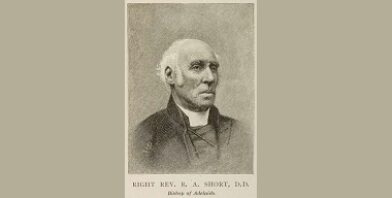The establishment of the Anglican Church is a multifaceted historical narrative woven through the rich tapestry of ecclesiastical, political, and social upheavals. This narrative intricately unfolds in the context of the 16th-century Reformation, a seismic shift that reverberated through Europe, challenging the hegemony of the Catholic Church and leading to the emergence of various Protestant denominations. In this discourse, we will delve into the inception of the Anglican Church, exploring the watershed moments that catalyzed its establishment, the controversies that ensued, and how synods evolved into a cornerstone of Anglican governance.
At the heart of the Anglican Church’s origins is King Henry VIII, whose tumultuous reign precipitated the schism with Rome. The often-cited impetus for this schism was Henry’s desire for an annulment from Catherine of Aragon. The refusal by Pope Clement VII to grant this annulment catalyzed a nationalistic fervor and led to a re-evaluation of ecclesiastical authority in England. In 1534, Henry enacted the Act of Supremacy, declaring himself as the Supreme Head of the Church of England. This momentous decision not only severed ties with the Papacy but also established the monarch as the apex authority in matters of faith and governance.
The schism, however, was not merely a product of personal ambition; it was undergirded by broader theological and political currents. Reformist ideas, influenced by the likes of Martin Luther and John Calvin, began to permeate English society. The translation of the Bible into vernacular English allowed laypeople to access Scripture directly, thereby fostering a spirit of inquiry and debate regarding traditional doctrines. This burgeoning sense of autonomy and reform ushered in a new paradigm of faith that would ultimately shape the Anglican identity.
What followed was a period laden with both conflict and consolidation. Following Henry’s death in 1547, his son Edward VI continued the Protestant reforms with fervor, allowing for the introduction of the Book of Common Prayer, which codified Anglican liturgy and emphasized a reformed understanding of the sacraments. However, Edward’s untimely death in 1553 ushered in a brief Roman Catholic restoration under Queen Mary I, whose reign was marked by persecution of Protestant dissenters, further deepening the divides in the faith landscape.
The subsequent ascendancy of Queen Elizabeth I in 1558 reinstated Protestantism and attuned the Church of England to a more moderate theological stance. The Elizabethan Religious Settlement sought to establish a via media, a middle way that would bridge the palpable chasm between staunch Catholicism and radical Protestantism. In this respect, Elizabeth’s reign was instrumental in stabilizing the Anglican Church and defining its ethos, characterized by a unique blend of tradition and reform.
Central to the governance of the Anglican Church were the synods, which emerged from the necessity of articulating a cohesive doctrine and addressing the emerging issues within the rapidly evolving religious landscape. The synod, or assembly of clergy and laity, became a pivotal institution where theological debates and administrative decisions took place. These gatherings mirrored the democratic principles of early congregational governance while maintaining distinct ecclesiastical authority.
From the outset, the Anglican Church delineated itself from its Catholic roots through its embrace of the Thirty-Nine Articles of Religion, crafted during the Elizabethan era to establish a definitive Anglican doctrine. These articles articulated key theological positions such as sola scriptura, the significance of grace, and the priesthood of all believers, which provided a robust framework for Anglican identity. Such theological distinctiveness facilitated dialogues among diverse Anglican factions, encompassing High Church, Low Church, and Broad Church perspectives, each contributing to the rich tapestry of Anglican worship.
As the Anglican Church spread its influence globally through colonization and missionary endeavors, it encountered myriad cultural contexts. The establishment of colonial Anglican institutions often necessitated the adaptation of liturgy and practice to resonate with local customs while preserving the core tenets of the faith. This engagement with indigenization and contextualization spurred further development of synodal governance, particularly in places such as Australia, where local synods began to reflect the unique spiritual needs of emerging Anglican communities.
Moreover, the 19th and 20th centuries presented new challenges in the form of social issues and the rise of modernism, which prompted Anglicans to engage with contemporary cultural dialogues. The Oxford Movement, for instance, sought to rediscover the Catholic roots of Anglicanism, promoting a liturgical revival and emphasizing the sacramental life. This period of introspection contributed to a deeper understanding of Anglican identity and the Church’s role in the modern world, illustrating the dynamic interplay between tradition and innovation.
In contemporary times, synodical governance has evolved to encompass a broader range of perspectives and issues, reflecting the dialogue within an increasingly globalized Anglican Communion. The Lambeth Conferences serve as international gatherings of Anglican bishops, seeking to address pressing matters such as social justice, environmental stewardship, and inclusivity. These gatherings demonstrate the ongoing commitment of the Anglican Church to engage with pertinent global issues while remaining rooted in its historical narrative.
Thus, the establishment of the Anglican Church stands as a testament to the interplay of divine providence and human agency. From the initial schism under King Henry VIII to the contemporary global Communion, the Anglican Church has navigated the complexities of faith, governance, and identity. As the Church moves forward, it continues to reflect on its past while engaging with the ever-evolving landscape of Christianity, striving to maintain a balance between tradition and the pressing needs of the present.



